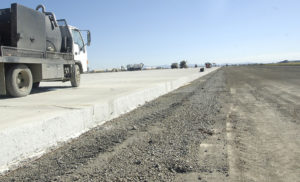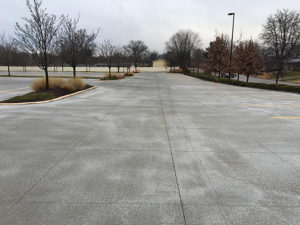Common Mistakes to Avoid When Pouring a New Concrete Driveway
Pouring a new concrete San Antonio driveway is no easy task. It’s essential to get every detail right, from the type of cement you use to how much water you add. You’ll also need to know what tools you’ll need, how long it will take for your new driveway to dry, and hiring concrete contractors in San Antonio.
In this blog post, we’ll share some common mistakes homeowners make when pouring a new concrete driveway so that you can avoid them altogether!
What are the advantages of a concrete driveway?
The results of having a new concrete installation are typically lasting and beautiful. Concrete is very versatile, and the results of a concrete driveway are well worth the effort.
The advantages of doing new concrete work include:
- Enhance property value
- It’s long-lasting
- It’s low maintenance
- The suitable concrete can come in a wide variety of colors and styles, including stamped patterns. New concrete work will provide a low-maintenance, durable surface. When suitable concrete is chosen for your climate and style preference, it can even be aesthetically pleasing.
Common mistakes to avoid when pouring a new concrete driveway
Wrong cement type
Using the wrong type of cement for your San Antonio project. Type I and Type III are the two most common types used for concrete foundations and concrete floors, but Type II is no longer used in residential projects because it takes too long to set.
Not enough water
Not using enough water or adding too much water can cause issues with how quickly the cement dries. The ratio should be approximately one part.
Portland cement to three parts clean, coarse sand (no smaller than ¼ inch) and four parts gravel aggregate measuring between ½ and ¾ inches in size. Making sure that you use this exact mixture will ensure that you get strong results! We recommend having an extra 50 pounds on hand just in case if something does go wrong.
Using too much water
Using too much water could cause an issue since it weakens concrete over time by making its structure more porous than usual, so consider adding extra water unless needed for specific projects where strength isn’t as critical. Make sure to read labels carefully whenever buying new bags from a supplier - they might have different ideas about what you need for pouring a new concrete driveway.
Improper curing
Improper curing could be an issue if you’re replacing an old driveway during hot summer months since heat speeds up drying time too quickly without proper care. Make sure there’s plenty of shade on the driveway at all times, you’re using enough water (covering up to ½ inch deep), and that it’s moist for several days following your pour. If any one of these items is neglected, you’ll end up with a cracked or porous surface.
Not using covers
Not covering the gravel aggregate will cause issues since rain can seep through the sand and cement mixture underneath and warp its structure if left untreated. The cure time might be longer than expected because this could happen.
Not using edging materials
Another common mistake homeowners make when pouring a new concrete driveway involves thinking they don’t need edging materials like plywood sheets around their work area as forms won’t be necessary here (like doing a decorative driveway). However, this is a mistake since the plywood will help retain water around the edges.
Not enough steel reinforcements
Not applying enough steel reinforcement mesh could be an issue as well since you’ll need to use it with every layer of cement poured during your pour. Make sure not to skimp on how much you lay down! You can also add more layers; ensure they are correctly attached first for maximum strength and durability. Remove them from your new concrete driveway after curing is complete.
Not using a power float
Not using a power float is another mistake that will lead to issues with how strong your driveway ends up being if you don’t use the tool! It’s used once all of the steel mesh has been added and smoothed out across the surface, but it’s not necessary when pouring during cooler months either because there won’t be any heat involved here at this point.
Using a low quality concrete mix
Using a low-quality concrete mix is another mistake homeowners often make, which means you’ll have issues with how strong your finished product ends up being, so always go with the best available options whenever possible while pouring a new driveway. Make sure not to skimp on cement or sand either since this will also affect the quality of the concrete.
Spilling or dropping things
Spilling or dropping things into wet forms can lead to weak spots forming on your finished product when curing is complete, which means they may crack along these lines easily due to changes during the winter months. If this happens, you’ll also need extra steel mesh since it should be included in the mix from the beginning to help strengthen these weak areas.
Mesh exposed to weather
Using steel mesh that’s been exposed to the weather is another mistake homeowners often make because doing so means you’ve already weakened your finished product before pouring a new concrete driveway even starts! Make sure all of what you’re using has only arrived on site where things are being prepared - never use something that has spent time outside under any circumstances.
Not adding enough gravel or sand
Not adding enough gravel or sand into forms leads to issues with overall strength. Still, most people don’t realize how much extra cement they need when pouring a new driveway over time, leading to cracks down the road thanks to freezing temperatures during the winter months. You’ll need to use more steel mesh here instead if this is the case, so don’t forget about it unless you want your finished product to crack at some point in time for pouring a new concrete driveway!
Taking shortcuts
Taking shortcuts with low-quality tools or mixing equipment leads to weakened areas on already poured concrete too, which is why you’ll need to use more steel mesh for reinforcing purposes after pouring a new driveway if this happens. You may also want to ask your supplier about adding extra cement or water (or both) next time around whenever possible while making sure everything else looks good, too - don’t forget to check underneath the forms either before removing them!
Pouring concrete on hot days
According to some professional concrete contractors, pouring on hot days can lead to weakened areas where water has been added, so using cold water as much as possible during preparations here will help prevent these issues from occurring. Make sure not to do anything that weakens your finished projects when trying out different approaches like pouring a new concrete driveway, though since it’s often better colder temperatures by default!
Not allowing space for expansion
Not allowing space for expansion can cause cracking in the concrete or shifting of your driveway. To keep this from happening, you need to leave enough room between sets of forms so that when the concrete is poured, it will have room to expand without putting pressure on any given section.
Did not use reinforcing fibers
It is essential to use fiber when pouring a driveway since it strengthens the concrete and prevents cracks. Using wire mesh or fabric ensures that your new driveways will last longer, but if you do not add these materials, then expect your driveway to crack in just one year under normal wear-and-tear conditions.
Troweling too soon
This is a mistake that often leads to the surface being left with ridges or humps. The concrete should be allowed to “cure” before it is troweled, which means going over it with a metal tool designed for this purpose. If done too soon, the process of removing excess water from beneath the newly placed material can leave permanent marks on its surface. This will have to be removed by applying more fresh concrete and then re-troweling - an expensive prospect most homeowners would rather avoid.
Ignoring Drainage Issues
If the water cannot flow out of your driveway, it could leave behind puddles or cause sinking and cracking. Use a soil pressure gauge to determine how much water drains from your driveway each hour. You can also use a rain or garden hose to test the drainage of your existing dirt drive before pouring concrete if you have access to it.
How to prevent these concrete pouring mistakes
There are several things San Antonio homeowners can do to avoid common concrete pouring mistakes.
- First, it’s essential to use the right tools and equipment for this type of project. This includes a shovel or trowel, a bucket with clean water, a broom made out of straws, plastic sheeting covering everything nearby, etc. Make sure to put these items in a safe place before you pour the concrete.
- Second, make sure to follow all safety precautions when handling this material and equipment and during application. It’s important not to rush this process; it should be completed slowly and carefully for best construction results. Concrete needs time to dry properly, which is why walking on or driving over it is not recommended until the next day.
- Lastly, take precautions, so you don’t contaminate or ruin your concrete driveway project after it has been poured. Once the material dries and begins curing, you should keep track of how long this process takes to avoid any damage later on due to excess moisture exposure. It’s also recommended to use oil-based sealants with this type of project.
Hire the best San Antonio concrete contractors your budget can afford. These professional concrete services will know how to handle the material and ensure that your driveway and existing concrete surface is poured correctly for optimal results.
Conclusion
We hope that the information we’ve provided has been helpful for you to avoid these common mistakes. If you want to make sure your Texas concrete driveway project is poured correctly and on time, call us today!
SATX Concrete Contractors will put together an affordable plan with a timeline of when our professional team can be there to pour it so that everything goes smoothly. Our goal is to provide quality services and superior attention to detail to all San Antonio customers.
Call us at (210) 880-3929 for a free estimate.








